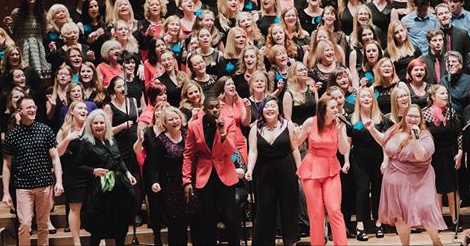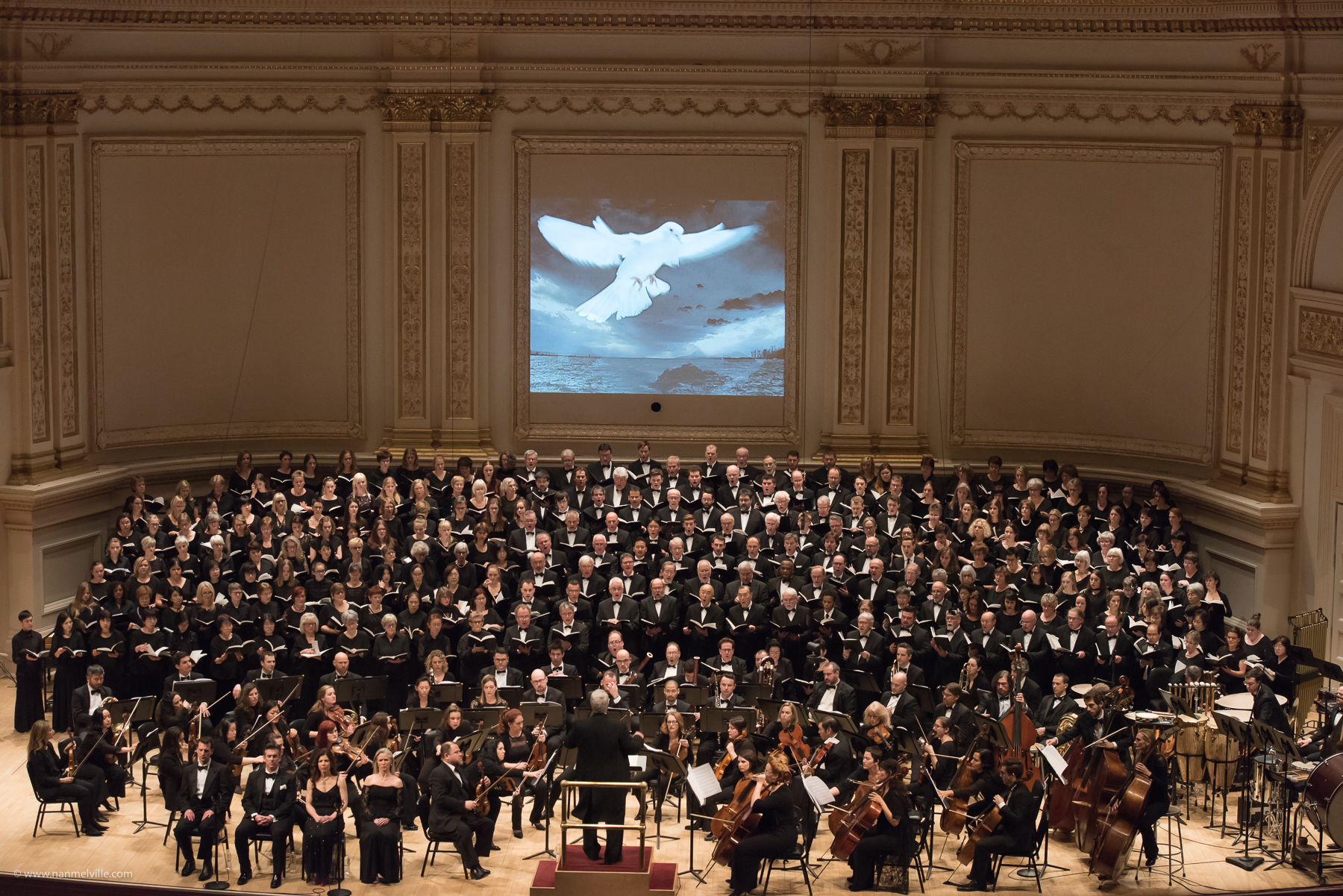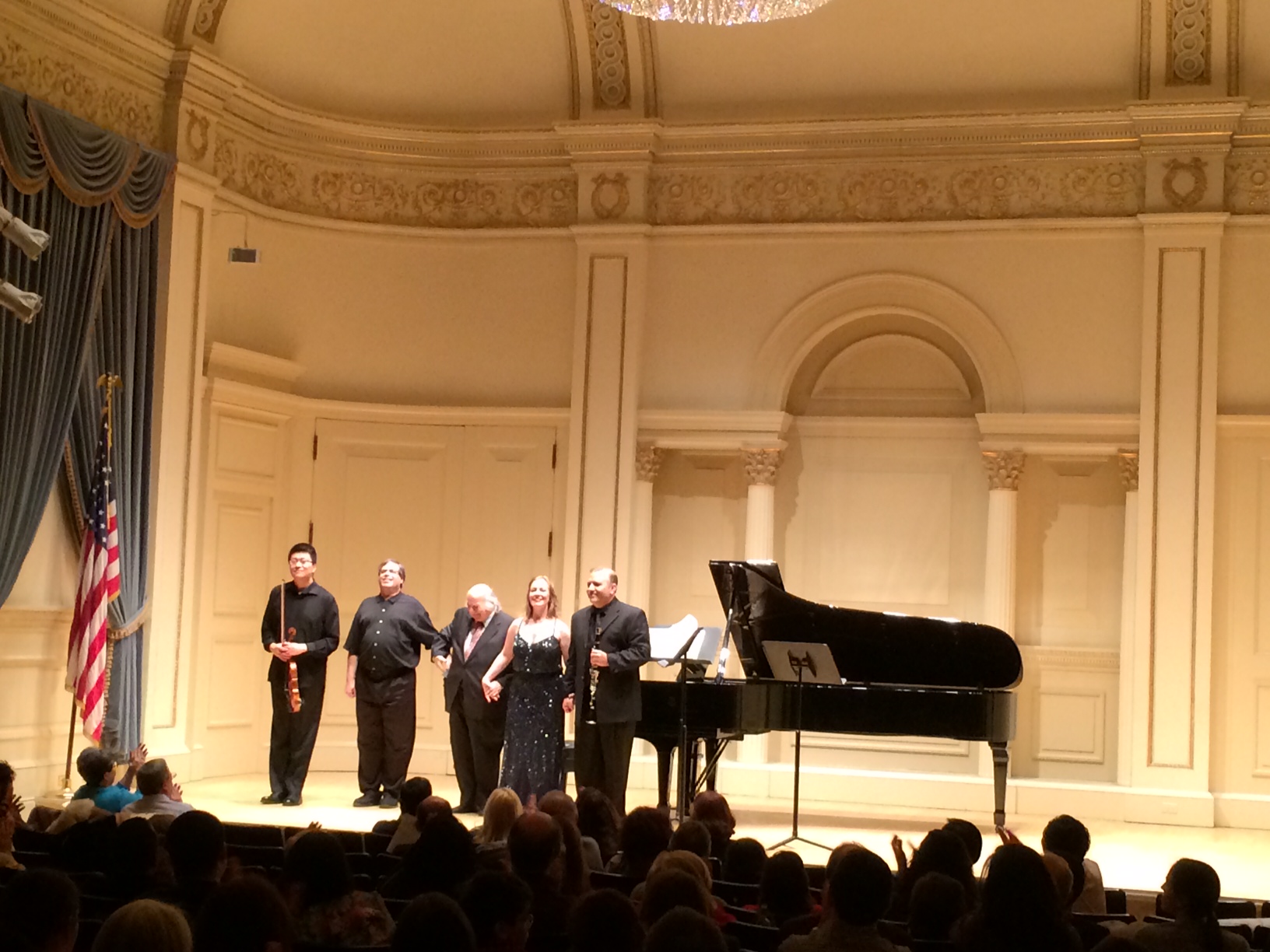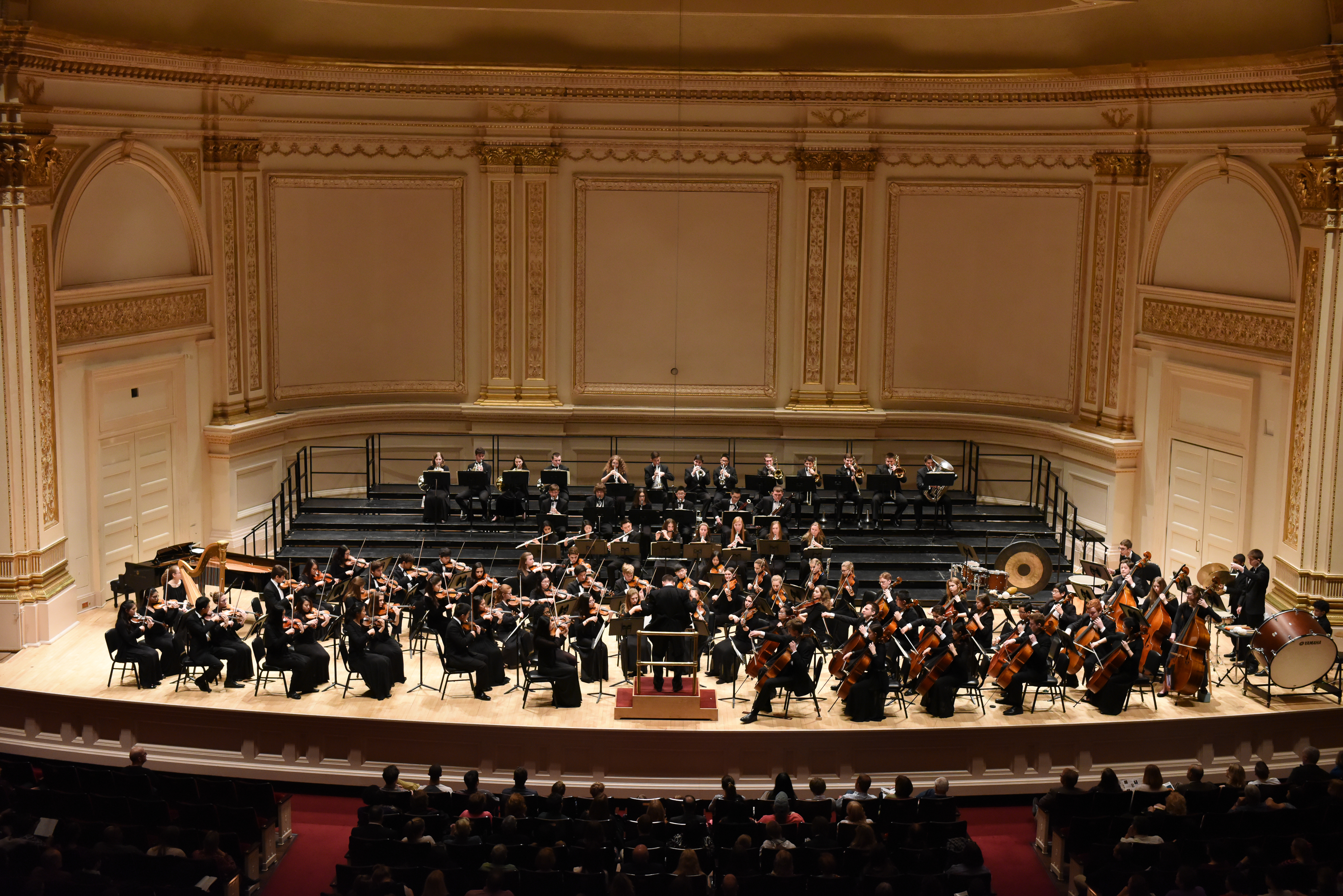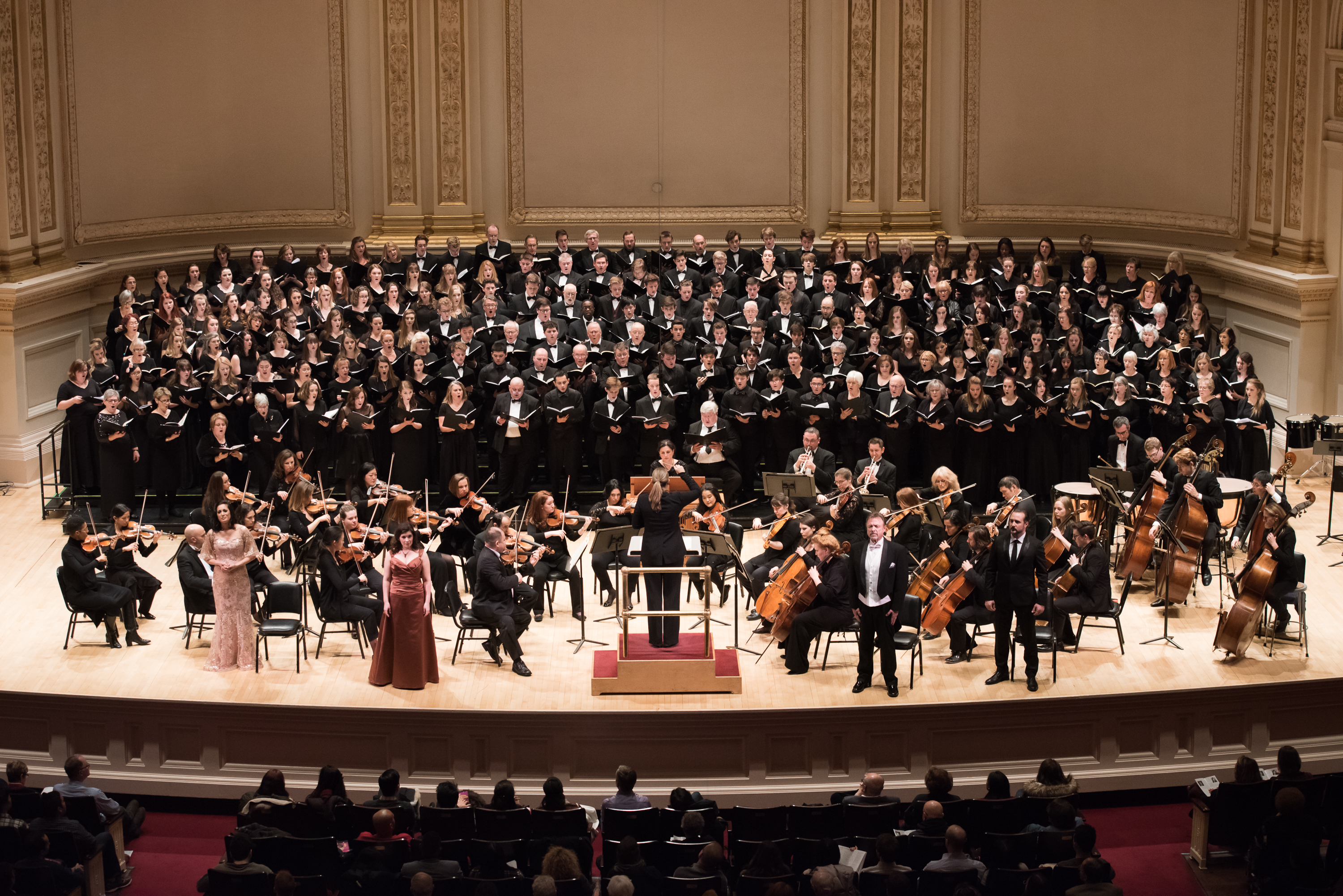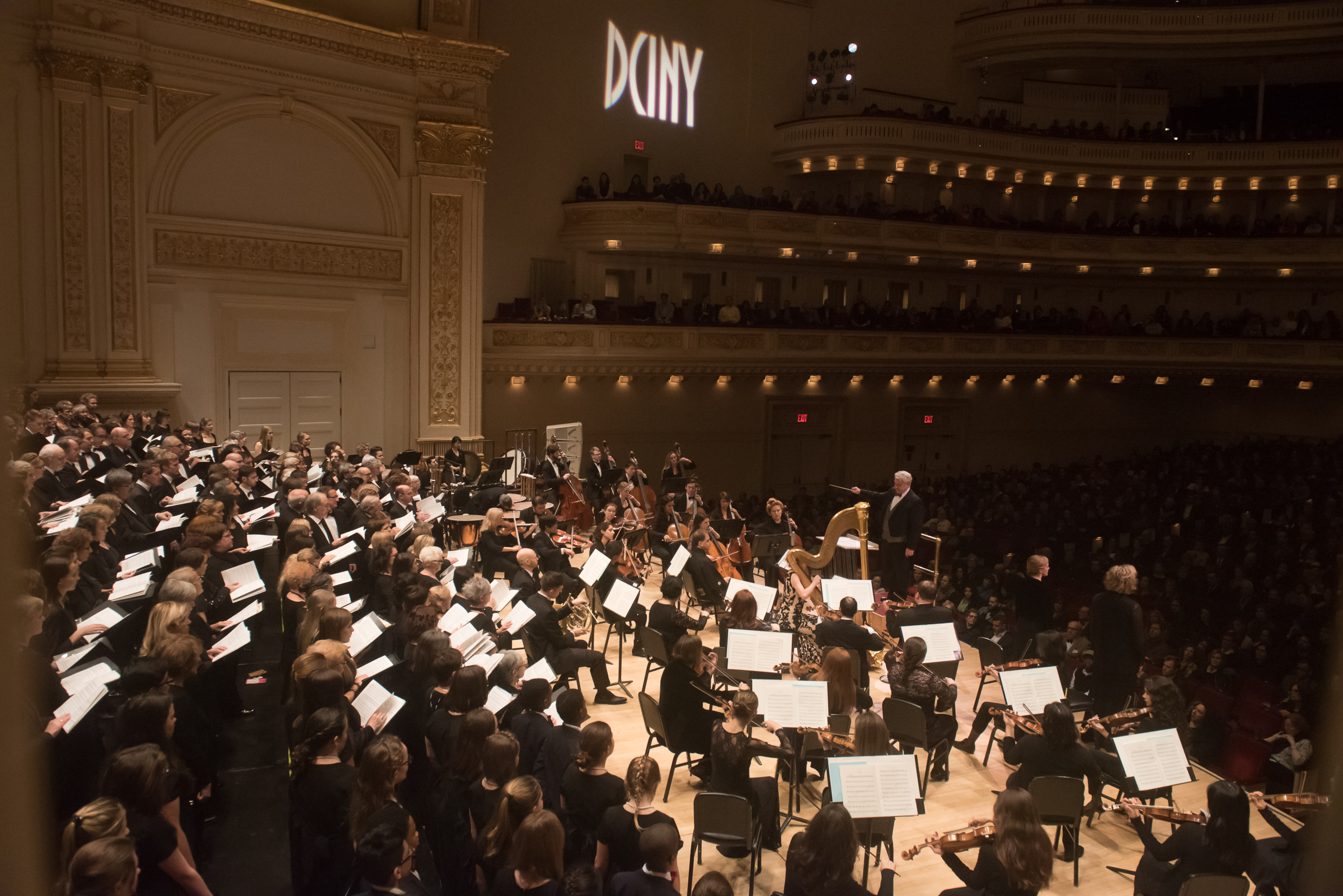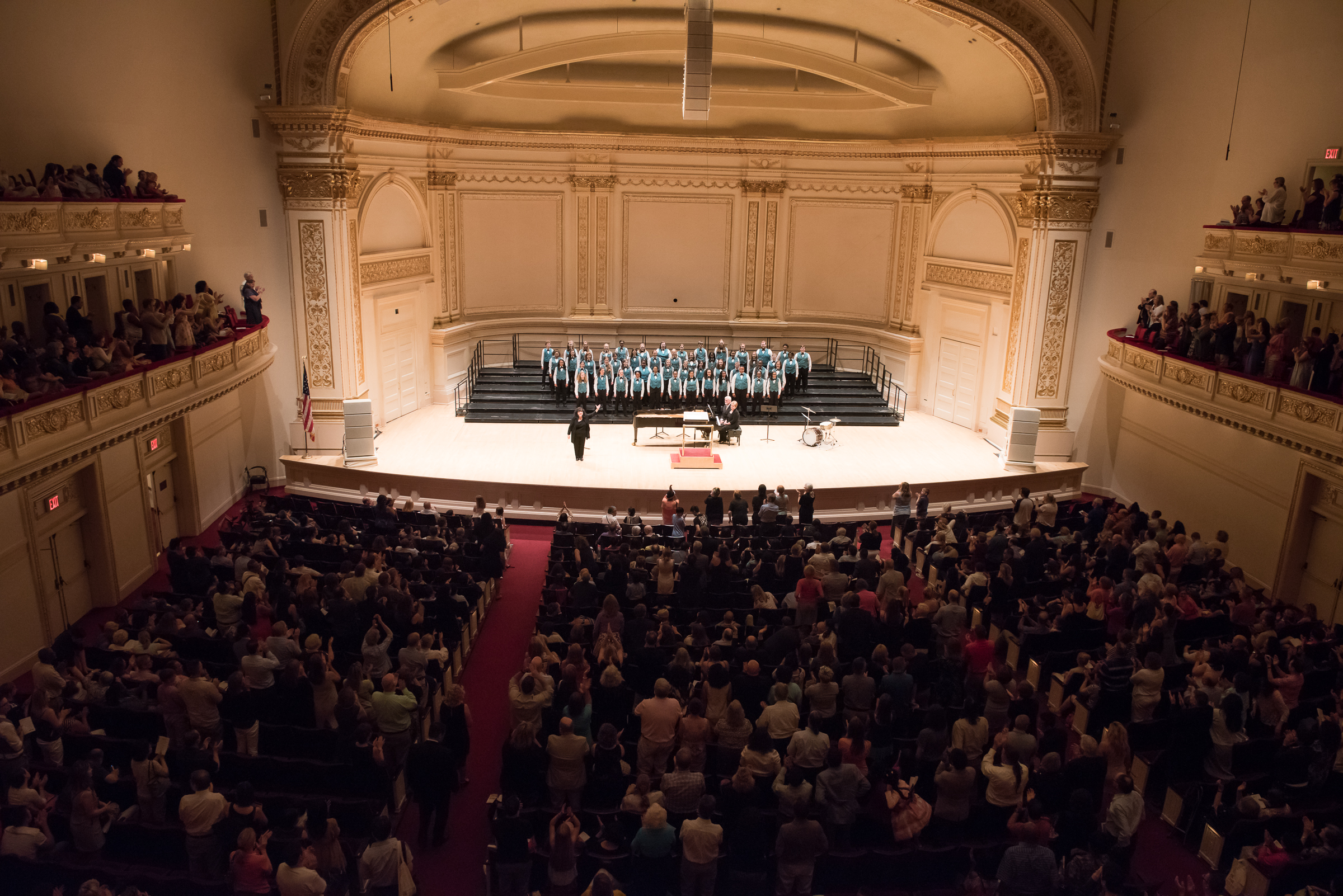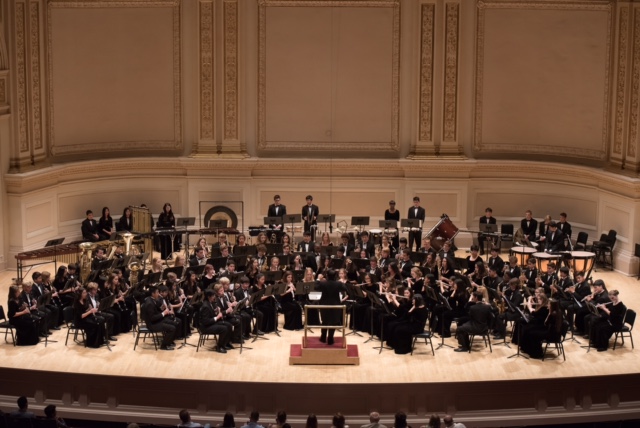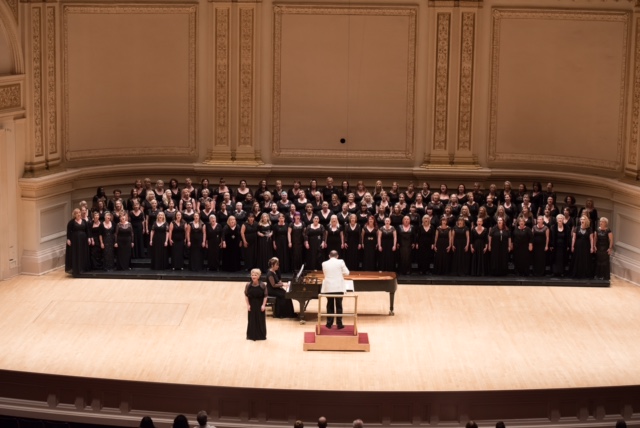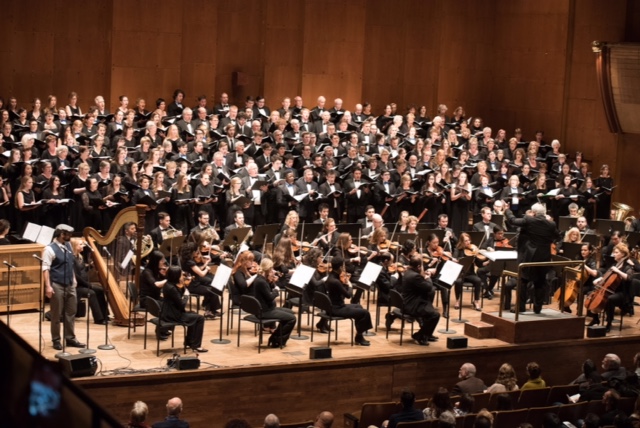Deke Sharon, host, conductor, arranger, and creative director
Shelley Regner, Matthew Sallee, guest soloists
VoicePlay, Shemesh Quartet, special guests
Distinguished Concerts Singers International
David Geffen Hall, Lincoln Center, New York, NY
March 25, 2018
Distinguished Concerts International New York (DCINY), masters of the “big show,” outdid themselves in the fourth edition of Total Vocal. Deke Sharon, arguably the leading force in the world of a cappella, was once again on hand to host and direct. What used to be the domain of East coast colleges, with a few hundred groups, has now exploded into a worldwide phenomenon, with over 3000 groups, largely to the popularity of shows and movies such as The Sing-Off and the Pitch Perfect franchise, to which Mr. Sharon’s contributions were integral.
The two-hour extravaganza had something for everyone, and even the crustiest of curmudgeons would have been hard pressed not to feel the pure joy that filled the hall. The concert was live streamed on DCINY’s Facebook page. Click here to watch and re-live the fun: DCINY Facebook page
There are concerts after which a reviewer will offer specific comments about intonation, diction, balance, and other musical considerations. This is not one of those concerts; for one, it would be almost obnoxiously nitpicky, and secondly, it would miss the point of the concert altogether. Quoting Mr. Sharon: “This is not a classical concert. You can clap, sing along, or dance if you want to.” Many audience members in the sold-out David Geffen Hall took up Mr. Sharon on his offer, and it was one of the most pleasurable two hours this listener has had in a long while.
Mr. Sharon informed us that there were 525 singers from nine countries, and one might make the assumption that all of the performers would all be youngsters. This would be wrong! The ranks of the singers were filled with not only teens and twenty-somethings, but many “veterans” as well. It was wonderful to see the young with the old, people from around the world all joined together having the time of their lives. My attention was especially drawn to an elderly gentleman in the front row who showed the enthusiasm and energy of a teenager. You’ll be sure to find your own favorites.
With twenty-two songs (eleven on each half), and nearly thirty soloists, it would turn this review into a book report to name each and every song and soloist. I’m going to limit myself to the guest soloists, featured ensembles, and highlights of the other selections. For a full list of songs, soloists, and performers, click here: Total Vocal Program Notes.
An ensemble named Room 100, from the Peters Township High School in Pittsburgh, offered a stylish performance of Norah Jones’s Don’t Know Why. The Shemesh Quartet from Mexico, favorites from the third Total Vocal, returned again this year and wowed the audience with their Latin Medley, which dramatized song samplings by pantomiming changing stations on a radio. The group Evolve, from Chesapeake High School in Maryland, gave us a high-octane performance of Duffy’s Mercy. Layne Stein, from VoicePlay, was dazzling in a solo of vocal percussion (sometimes called beatbox). Matthew Sallee, the newest member of Pentatonix, closed the first half with Lionel Richie’s All Night Long. His voice and engagement with the audience brought the house down in what was the highlight of the concert for this listener.
On the second half, the entire ensemble of VoicePlay sang a touching rendition of Waving Through a Window, from the Broadway hit Dear Evan Hansen. The delightfully named Psycho-Chor de FSU Jena, from Germany (the name refers to members being psychology students at the Friedrich-Schiller-University, Jena) was both slick and sophisticated in the song Royals, by Lorde. Candice Helfand-Rogers’s F You (by Lily Allen, not to be confused with the CeeLo Green song of the same title) was appropriately saucy. No Treble, from Bangalore, put their own imprint on Cups, a version of the 1931 song When I’m Gone that became popular after Anna Kendrick’s rendition in the first Pitch Perfect movie from 2012. Shelley Regner, from the Pitch Perfect movies, was ebullient in the Katrina and the Waves hit Walkin’ on Sunshine.
This listener’s favorites from the other selections were Toxic, in a James Bond meets Britney Spears arrangement, Proud Mary (the Tina Turner version, of course!), Louis Prima’s Sing, Sing, Sing, which broke out into a swing dance party on stage, and Randy Newman’s tear-jerker When She Loved Me.
The hyper-energetic Mr. Sharon obviously loves what he does. His enthusiasm was infectious as he roamed the stage, sprinting to help a performer with microphone issues, dancing along and blowing kisses to all, while working the audience as if he had been born to do it. He also arranged nearly every song on the program, and even sang solo on George Gershwin’s Summertime. His vocal mimicking of a trumpet, complete with Harmon (“Wah-Wah”) mute was mind-blowing. What a talent!
U2’s I Still Haven’t Found What I’m Looking For had Voiceplay, Ms. Regner, and Mr. Sallee return in a showstopper finale. Singers from the first half raced up the aisles to join in.
The built-in encore The Lion Sleeps Tonight, with “mandatory” audience participation brought the concert to a rousing close. The fifth Total Vocal is already on the calendar for Palm Sunday in 2019. Mark your calendars now and be there. You’ll have the time of your life!

